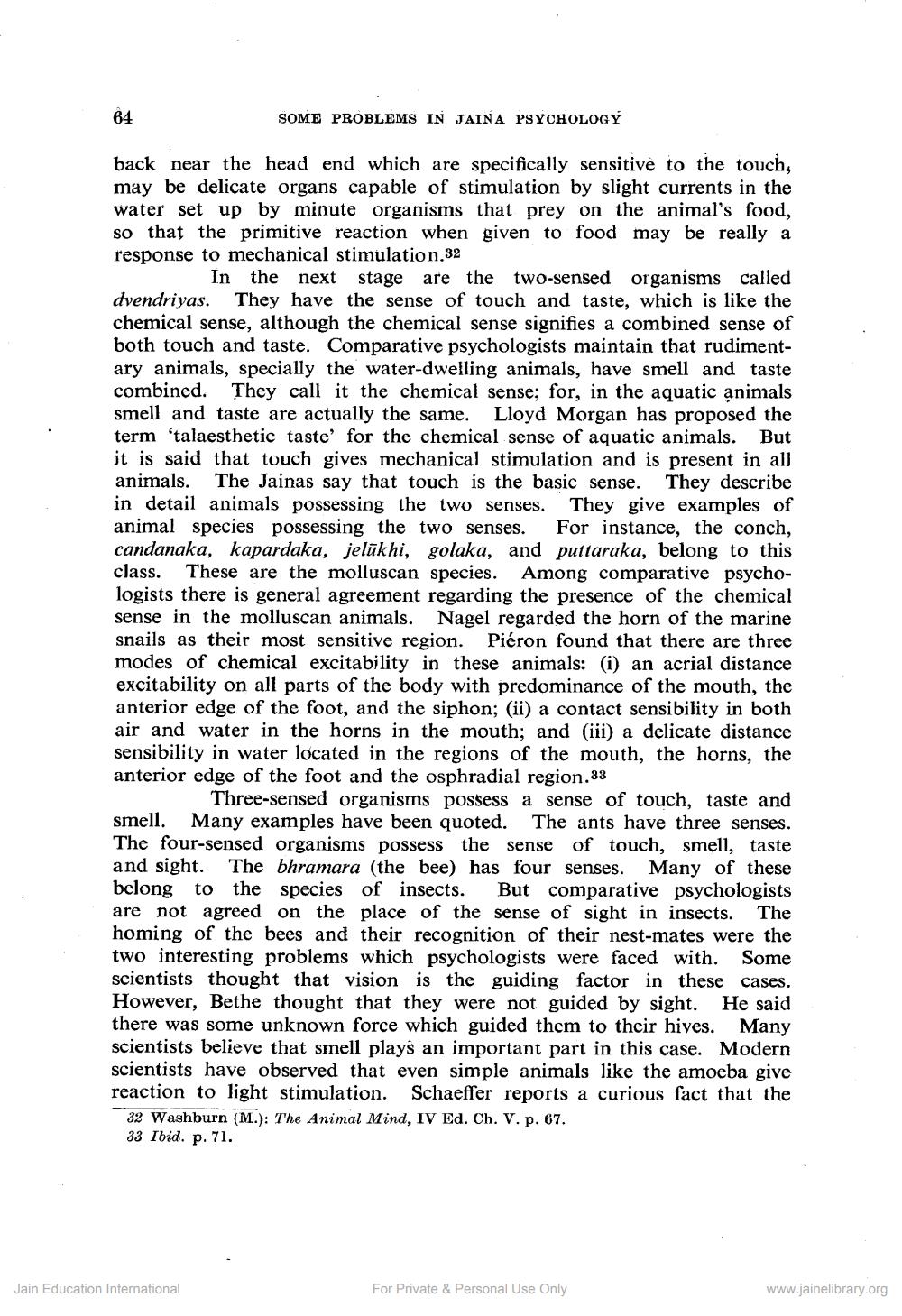________________
64
SOME PROBLEMS IN JAINA PSYCHOLOGY
back near the head end which are specifically sensitive to the touch, may be delicate organs capable of stimulation by slight currents in the water set up by minute organisms that prey on the animal's food, so that the primitive reaction when given to food may be really a response to mechanical stimulation.32
In the next stage are the two-sensed organisms called dvendriyas. They have the sense of touch and taste, which is like the chemical sense, although the chemical sense signifies a combined sense of both touch and taste. Comparative psychologists maintain that rudimentary animals, specially the water-dwelling animals, have smell and taste combined. They call it the chemical sense; for, in the aquatic animals smell and taste are actually the same. Lloyd Morgan has proposed the term 'talaesthetic taste' for the chemical sense of aquatic animals. But it is said that touch gives mechanical stimulation and is present in all animals. The Jainas say that touch is the basic sense. They describe in detail animals possessing the two senses. They give examples of animal species possessing the two senses. For instance, the conch, candanaka, kapardaka, jelūkhi, golaka, and puttaraka, belong to this class. These are the molluscan species. Among comparative psychologists there is general agreement regarding the presence of the chemical sense in the molluscan animals. Nagel regarded the horn of the marine snails as their most sensitive region. Piéron found that there are three modes of chemical excitability in these animals: (i) an acrial distance excitability on all parts of the body with predominance of the mouth, the anterior edge of the foot, and the siphon; (ii) a contact sensibility in both air and water in the horns in the mouth; and (iii) a delicate distance sensibility in water located in the regions of the mouth, the horns, the anterior edge of the foot and the osphradial region.33
Three-sensed organisms possess a sense of touch, taste and smell. Many examples have been quoted. The ants have three senses. The four-sensed organisms possess the sense of touch, smell, taste and sight. The bhramara (the bee) has four senses. Many of these belong to the species of insects. But comparative psychologists are not agreed on the place of the sense of sight in insects. The homing of the bees and their recognition of their nest-mates were the two interesting problems which psychologists were faced with. Some scientists thought that vision is the guiding factor in these cases. However, Bethe thought that they were not guided by sight. He said there was some unknown force which guided them to their hives. Many scientists believe that smell plays an important part in this case. Modern scientists have observed that even simple animals like the amoeba give reaction to light stimulation. Schaeffer reports a curious fact that the
32 Washburn (M.): The Animal Mind, IV Ed. Ch. V. p. 67. 33 Ibid. p. 71.
Jain Education International
For Private & Personal Use Only
www.jainelibrary.org




